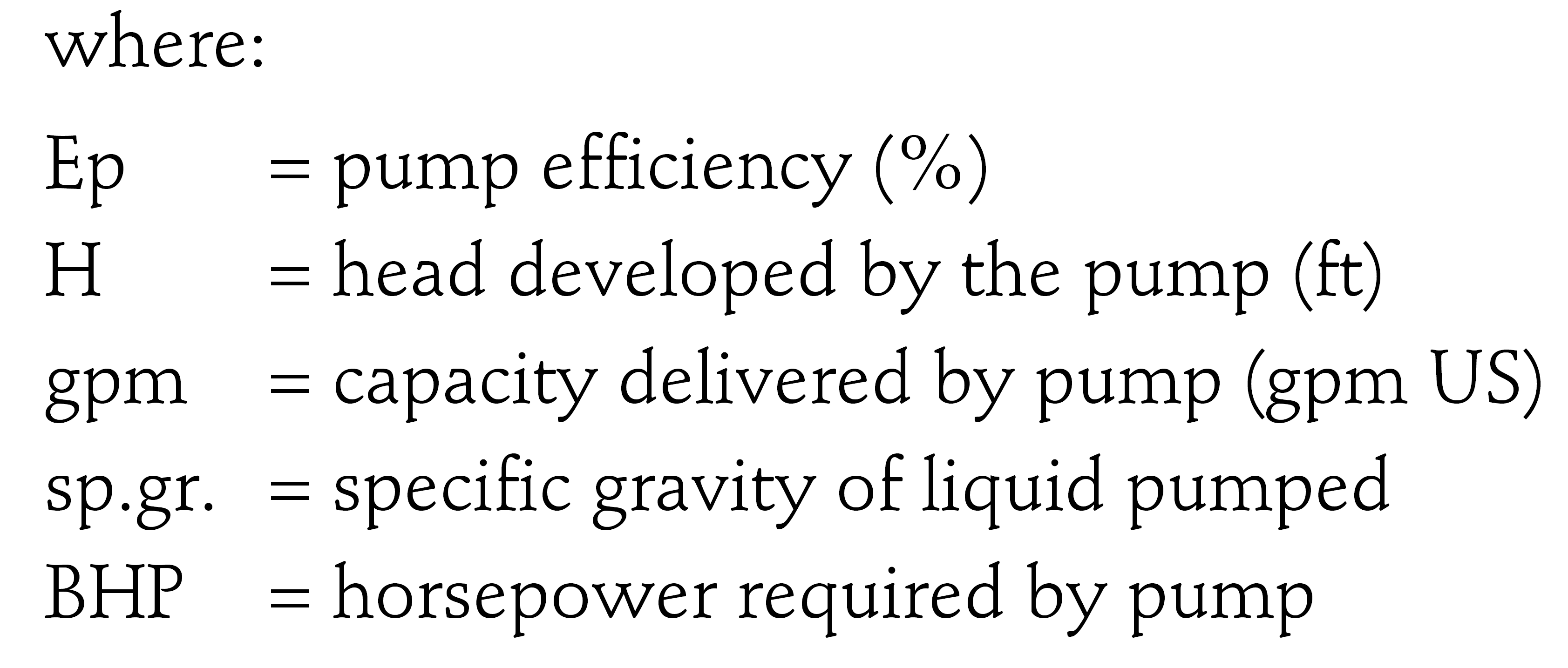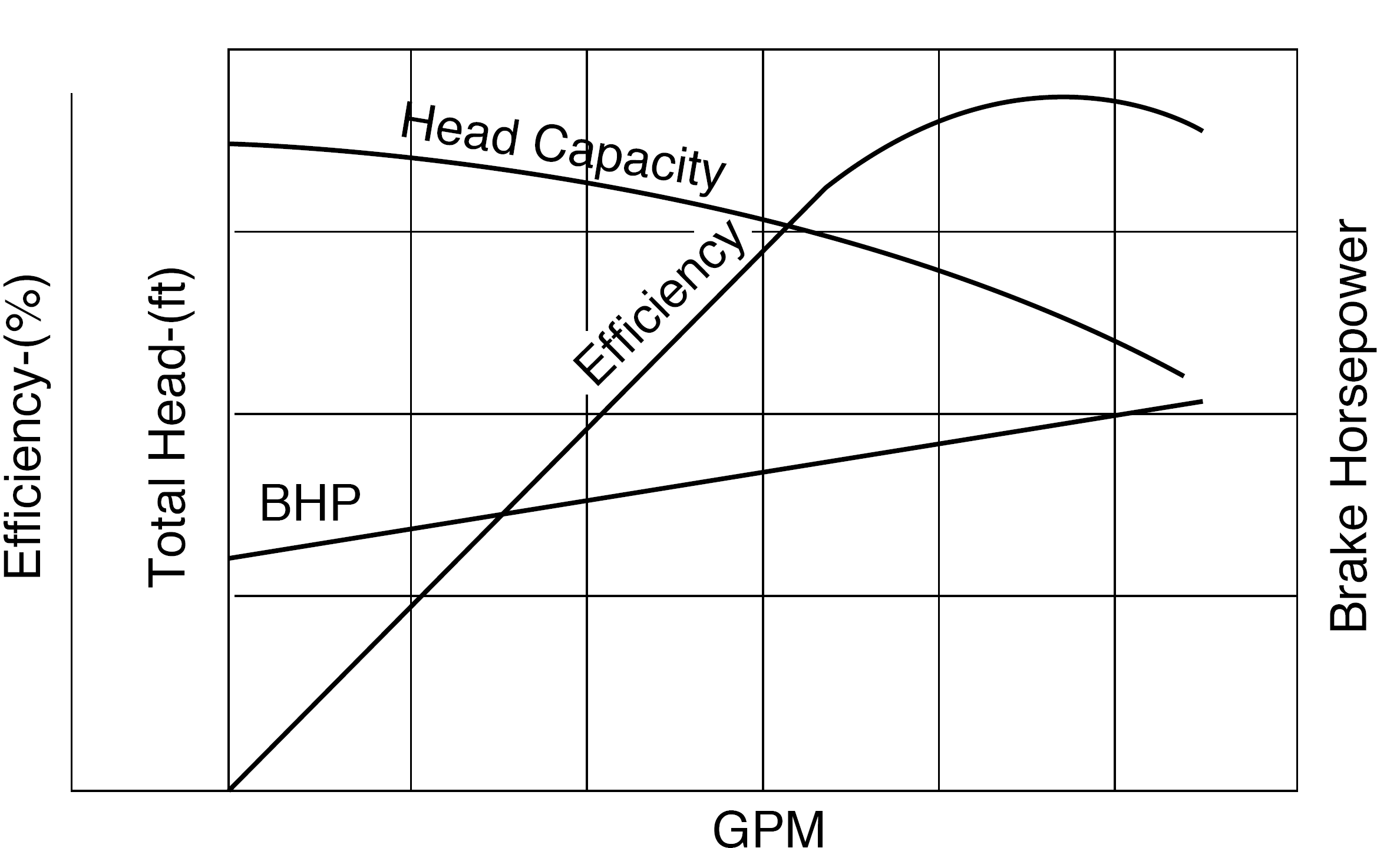Efficiency
Efficiency is one of the major characteristics of a pump. The performance of a centrifugal pump is normally described in terms of the following characteristics:
- Rate of flow or capacity Q, expressed in units of volume per unit of time, most frequently gpm US or cfs (1 cfs = 440 gpm);
- Increase of energy content in the fluid pumped or head H, expressed in units of energy per unit mass usually ft per lb, or more simply, ft of liquid pumped;
- Input power BHP expressed in units of work per unit of time, horsepower;
- Efficiency E, the ratio of useful work performed to power input;
- Rotative speed N in rpm.
Because the parameters indicated are all mutually interdependent, performance of a centrifugal pump is represented by characteristic curves.
Efficiency-capacity curve
Head-capacity curve and brake horsepower-capacity curve are determined by testing an actual pump for efficiency.
The efficiency cannot be measured directly, but must be calculated from the measured information.
The formula for efficiency is as follows:


Using the above formula, the efficiency at which the pump is operating at any given capacity can be determined. The efficiency points are then plotted on the graph and the curve is generated (below figure).

Many centrifugal pumps are not high efficiency energy transfer devices. In other words, only part of the energy used by the driver is actually transferred by the pump into pressure. The pump efficiency is the percentage of energy that transfers from the driver to the liquid in the form of pressure.
For the pumps with high pumping flowrate, the efficiency intend to increase up.
The energy supplied by the driver which does not transfer into pressure energy inside the pump has to go somewhere. Part of it goes to friction; part of it makes up for internal leakage; the remainder enters the liquid in the pump in the form of heat. As long as the pump is operating at an efficiency of 30% or more, the heat energy that transfers from the driver to the liquid in the pump will cause only a degree or two rise in the liquid temperature.
However, at low pumping rates, the efficiency may drop as low as 10-20%, which means that a larger percentage of the driver energy is entering liquid in the pump in the form of heat. In this situation, temperature rise may be several degrees, which may vaporize part of the internal parts of the pump to the point that damage may occur.
A pump having several impellers will have a temperature in rise across each impeller. In some instances, this limits the number of impellers that can be installed in a pump case.
Comments:
- Vendor’s performance curves and quoted efficiency, however, must be based on API clearances.
- For pumps with variable speed drives, the impeller diameter giving the maximum effic. shall be selected. If this results in the selected impeller diameter being the maximum for the chosen casing, then the driver and pump shall be capable of the speed increase necessary to give a 5% increase in head (per API Std 610 clause 5.1.6 Note) and to correct any head shortfall during testing, including the -2% tolerance per table 14.
- NPSH and efficiency curve for max. impeller diameter shall be submitted.
- Corrected effic. curve with respect to viscosity correction factors shall be submitted.
Reference:
API 610
Pumps Reference Guide {Gordon S. Bolegoh}
